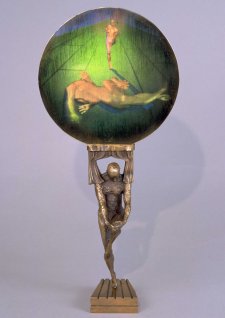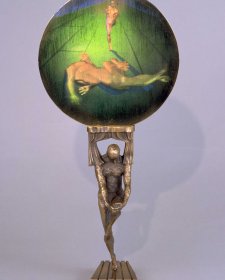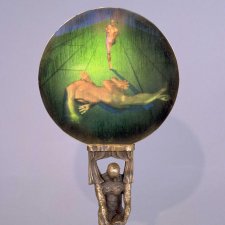Temporary road closures will be in place around the Gallery from 26 February during the Enlighten Festival.
Graeme Murphy AO (b. 1950), choreographer and dancer, was the youngest male dancer to be accepted into the Australian Ballet School, and commenced with the Australian Ballet at the age of eighteen. Eight years later, in 1976, he was appointed artistic director of the Sydney Dance Company (then known as The Dance Company NSW). Since then he has created a repertoire of some seventy works, including productions for Opera Australia, the Australian Ballet, and the Metropolitan Opera, New York. His most popular piece is perhaps Poppy (1978), a full-length ballet based on the life of Jean Cocteau, in which he danced the title role four years after announcing his retirement. In 2001 he was presented with a Helpmann Award for his Body of Work; he won another for best choreography for Swan Lake in 2003. Named a Living National Treasure in 1999, Murphy retired from the Sydney Dance Company in 2007 after three decades as artistic director. His recent honours include the 2009 Best Choreography Green Room Award for Firebird and the 2011 Fred & Adele Astaire Award for Excellence in Choreography. He was named an Officer of the Order of Australia in June 2012 for his distinguished contribution to Australian dance.
Stuart Campbell (1951–2009) was born in Ballarat and became interested in photography as a student at Swinburne Technical College in Melbourne. In 1972 he moved to Sydney and studied at the National Institute of Dramatic Art. After graduation Campbell played on stage with major theatre companies, appeared in a number of films including Caddie (1976) and Starstruck (1982), and found work in television series including Certain Women, The Restless Years, Cop Shop and Patrol Boat. In the early 1980s he began taking portraits of friends such as actors Mel Gibson, Colin Friels and Judy Davis and filmmakers Gillian Armstrong and Peter Weir, building up a unique record of the actors, directors and writers of the decade’s ‘Australian New Wave’ cinema. This portrait of Murphy is one of ten photographs acquired by gift from Campbell’s estate following the National Portrait Gallery’s 2011 exhibition of his work, Between light and shadow.
Gift of the Estate of Stuart Campbell 2012
© Estate of Stuart Campbell



On one level The Companion talks about the most famous and frontline Australians, but on another it tells us about ourselves.



Lee Tulloch remembers her great friend NIDA-trained actor turned photographer Stuart Campbell.



Sam Bowker examines Paula Dawson's Mirror, Mirror - a holographic portrait of Graeme Murphy.